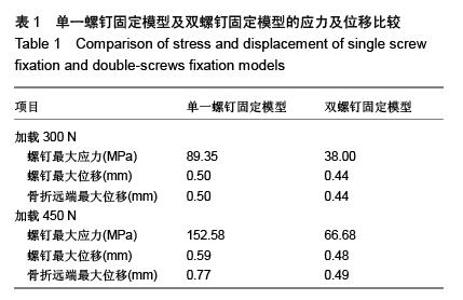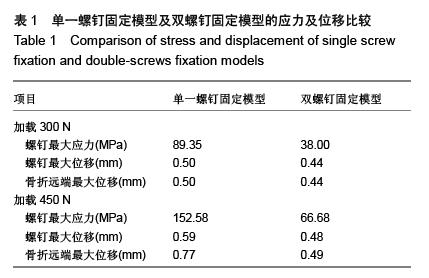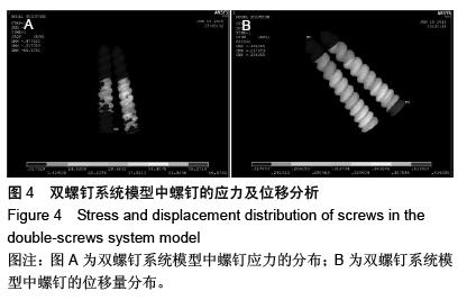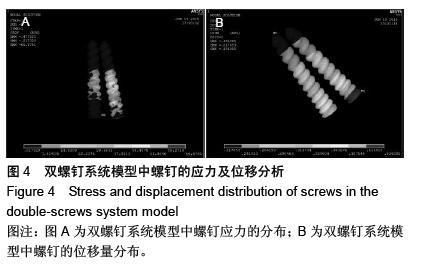| [1] 黄宁,史景超,蒋海勇,等. 跟距关节面外侧缘微创小切口结合可吸收螺钉内固定治疗SandersⅡ~Ⅲ型跟骨骨折[J]. 浙江创伤外科,2015,20(4):683-684.
[2] 周耀,王佳,竺智雄. 不同内固定材料治疗三踝骨折效果分析[J]. 中国医药导报, 2014,11(17): 61-64.
[3] 王希,邓宇,余黎. 加压空心螺钉与可吸收螺钉修复第5跖骨基底部骨折:足踝功能及骨折移位比较[J].中国组织工程研究, 2015, 19(13): 2114-2118.
[4] 刘立峰,蔡锦方,梁进.可吸收螺钉固定治疗移位的距骨颈骨折[J]. 中国修复重建外科杂志, 2003, 17(5): 367-369.
[5] 戢勇.可吸收螺钉治疗尺骨冠状突骨折, 第六届西部骨科论坛暨贵州省骨科年会,贵阳. 2010.
[6] 刘清华,余斌,李忠,等.下胫腓联合螺钉位置对踝关节应力分布影响的有限元分析[J].中华创伤骨科杂志, 2013,15(9): 778-783.
[7] 王子阳,吴国林,陈红卫,等. 可吸收螺钉内固定治疗内踝骨折32例临床研究[J].浙江创伤外科,2015,20(1):82-83.
[8] 徐自胜,任伯绪.基于有限元的人体四肢骨折的生物力学研究进展[J].实用医学杂志, 2011,27(4): 699-701.
[9] 赵亮,闫广华,瞿东滨,等.腰椎间盘退变对软骨终板生物力学特性影响的有限元分析[J].中国临床解剖学杂志,2015,33(4): 455-460.
[10] 田冲,张美超,欧阳钧.不同骨密度下松质骨螺钉生物力学性能的三维有限元分析[J].南方医科大学学报,2010,30(11): 2466-2471.
[11] 田文,王富明,黄俭.距骨颈骨折螺钉固定的三维有限元分析[J].临床骨科杂志,2013,16(1):82-84.
[12] 黄若昆,谢鸣,勘武生,等. 数字骨科学研究进展[J]. 中国矫形外科杂志,2010,18(12):1003.
[13] 刘清华,余斌,金丹,等.解剖结构完整的踝关节有限元模型构建及意义[J].山东医药,2010,50(14):1-3.
[14] 刘清华,余斌,庄岩.足踝部数字化研究的现状及浅析[J].中国骨与关节损伤杂志,2013,28(10):998.
[15] 许德慧,王晶.可吸收螺钉治疗肱骨髁骨折钉帽吸收不良并发症分析[J].中国现代药物应用,2013,7(3):40-41.
[16] 李淳德,马忠泰,吴常德,等.可吸收螺钉及固定棒(SR-PGA,PLLA)临床应用的初步报告[J].中华骨科杂志,1995,15(11):755-757.
[17] 颜端国,李茂贵,楼杨勇,等.可吸收螺钉治疗四肢骨关节骨折临床疗效观察[J].局解手术学杂志,2014,(2):175-176.
[18] 宋祖权. 可吸收螺钉与Acutrak螺钉治疗内踝骨折的临床效果比较[J]. 中国综合临床,2013,29(6): 626-627.
[19] 董方,徐宁,汤斌,等.可吸收螺钉在交锁髓内钉内固定治疗胫腓骨骨折中的应用[J].山东医药,2014,54(23):82-83,84.
[20] 杨波,万盛钰,吕玉明,等.Takiron可吸收螺钉与改良式张力带治疗髌骨骨折的疗效比较[J].广东医学,2013,34(8):1200-1202.
[21] 涂应兵,杨德菊,李志华,等.可吸收螺钉内固定治疗髋关节后脱位合并股骨头骨折[J].实用骨科杂志,2014,20(4):363-366.
[22] 宿玉玺,谢艳,覃佳强,等. 可吸收螺钉治疗儿童肱骨外髁骨折中期疗效分析[J].第三军医大学学报,2015,37(3):234-237.
[23] 姜保国,傅中国,张殿英,等.手术治疗踝关节骨折的临床研究[J].中华创伤杂志, 2003,19(7): 17-19.
[24] 梁军,于建华,郑得志. 踝关节骨折的手术治疗[J].中华骨科杂志, 2012,10(22):603-607.
[25] 王金华,窦光武,袁童杰.开放复位内固定治疗三踝骨折[J].江汉大学学报院:自然科学版,2013,41(2):89-91.
[26] George K,Becker D, Seligson D. Absorbable fasteners for the fixation of ankle fractures.J Dy Med Assoc. 1999;97(3): 105-108.
[27] Anderson DD,Goldsworthy JK,Li W,et al.Physical validation of apatient specific contact finite element model of the ankle.J Biomech. 2007;40:1662-1669.
[28] 徐菲.踝足数值模型的建立及踝关节外侧失稳的距骨有限元分析[D].天津医科大学,2009.
[29] 邹宇炜,杨新明,苏峰,等.外踝长度短缩时踝关节应力改变的研究[J]中国临床解剖学杂志, 2005, 23(6): 661-663, 667.
[30] Ye T, Chen A, Yuan W, et al. Management of grade III open dislocated ankle fractures: combined internal fixation with bioabsorbable screws/rods and external fixation. J Am Podiatr Med Assoc. 2011;101(4):307-315.
|



